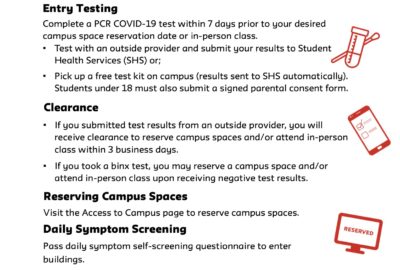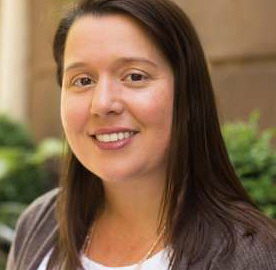 Oscar Sosa López is teaching a course on Transportation Planning and the Politics of Urban Mobility this fall. We sat down with him to talk about transportation policy, urban mobility, and citizenship.
Oscar Sosa López is teaching a course on Transportation Planning and the Politics of Urban Mobility this fall. We sat down with him to talk about transportation policy, urban mobility, and citizenship.
You’ve done a lot of research focused on understanding the relationship between sustainable transportation policy, urban mobility, and citizenship. What made you so interested in this area of study?
I’m a planner and my core interest is urban citizenship. I’m concerned with the different formal and informal processes through which resources are distributed in cities. These processes produce unequal regimes in which some have access to services and resources and others are excluded. These inequalities are also linked to who gets to participate in the decision-making processes behind plans, projects and policies. When I examine how planning and policy-making processes unfold, I look at who participates in these processes, what are the technical assumptions and political motives behind decisions and how these decisions impact existing regimes of urban citizenship.
When we analyze urban transportation through the lens of urban mobility, we’re not only looking at the formal governance of large infrastructure systems such as the subway or a bus network but also all the other infrastructures that make movement through the city possible. For instance, the simple act of walking around an unfamiliar neighborhood is an experience determined by our gender, skin color and appearance. Whether we feel safe, welcomed are even allowed to carry out a task is determined by a complex set of social, political and economic relations. While these relations are not always physically visible, they are central for the functioning of our cities, just like an electrical grid or a sewer line. Then we have transportation policy as a formal policy field focused on planning, managing and sanctioning mobility through complex physical systems. These systems are visible, public and used collectively, require large investments and shape the urban fabric for decades, if not centuries. The decisions around how to build and manage these systems can bring us benefits, such as rapid and affordable access to job centers, or put us at a disadvantage for an entire life, as in the case of neighborhoods displaced by highways.
Urban mobility and transportation policy offer an excellent vantage point to examine citizenship: on any given day we are affected by the many intangible infrastructures of mobility as much as by formal transportation policy decisions, and both of these determine how we access jobs, education, food and recreation. And in turn, these have impacts in other aspects of life such as health, safety, economic outcomes, access to housing, etc., in other words, they materialize what scholars call ‘citizenship regimes’.

On a personal level, I have been interested in sustainable urbanism and transportation for a long time. When I lived in California, I spent a lot of time hanging out with urban sustainability grassroot groups (eco-coops, urban farming, bicycle activists) but while I was, and remain an avid urban and recreational cyclist, I was not particularly interested in transportation studies. In fact, when I began my graduate school at Berkeley I was focused on regional governance and social movements engaged on the Right to the City movements. Early in my PhD I started studying a grassroots social movement in Mexico City called Frente Amplio contra la Supervía. This group of citizens mobilized against the construction of a private toll-road that would cut through a natural reserve and their low-income neighborhood and would not serve their community. In the process of confronting authorities Frente Amplio collaborated with local and international experts, academics and lawyers to redefine transportation and mobility as a human right that merged social equity concerns with urban sustainability principles. Ultimately, Frente Amplio lost their battle when the road was constructed. When I looked at this case in relation to other governance transformations going on in the city, I realized that many of the experts that supported Frente Amplio’s grassroots anti-privatization campaign were also promoting sustainable transportation projects in other parts of the city using privatizing, exclusionary and top-down strategies. I quickly realized that if I examined how sustainable transportation policy was constructed in Mexico City, I could further understand not only the contradictions of urban democratization processes, but also how and why urban climate change policies often lead to increased inequalities in cities across the globe. And that is precisely what my current research and book project is about.
What insights have you gained about the relationship between politics and transportation policy? What can we do to ensure equity-based transportation policies and investments that embrace the concerns of neighborhoods and communities?
The short answer would be: Politics are not an impediment for sustainable transportation policy; politics allows us to find adequate solutions and not repeat mistakes from the past. What I mean by this is that in transportation planning circles politics—in other words: resistance, contention and disagreements—are often seen as obstacles for the implementation of appropriate plans and solutions. Even the most progressive proponents of sustainable transportation lament that they cannot execute projects because they face “uneducated” citizens that oppose projects because they don’t understand what is best for them. From these kinds of statements, it’s a slippery slope into top-down authoritarian planning a la Robert Moses, no matter if your intentions are good. Similarly, in my research I have found that there is a tendency to quickly implement projects using ad-hoc agencies and outside entities instead of transforming our existing institutions. This seems smart and practical in light of the urgency of climate change, but often by going this route cities forego comprehensive and long-term planning capacity and citizens lose accountability mechanisms.
In my research I argue that politics are indispensable for democratic, inclusive and justice-oriented policymaking. I share these concerns with other scholars worried that the current overreliance on consensus-based policymaking and fast policy renders complex socioeconomic challenges as technical problems and ultimately legitimizes persistent inequalities. Some of this is true in transportation policy, and especially, sustainable transportation. There is a tendency to take certain policies, elevate them to best practices and reproduce them across the globe. I share many of the goals of sustainable transportation experts, however, an overreliance on best practices can have two problematic effects: First, it assumes that what worked in one city–for instance, a Bus Rapid System–will necessarily work in other cities with completely different political, social, economic and geographical characteristics. Secondly, by pre-selecting a solution, the role of the planner and policymaker is reduced to convincing communities that these projects will work when instead they should be fostering debates among experts and lay people about what their cities and communities need. I am not saying that best practices don’t work, certainly they work in some circumstances and we can learn a lot from what other cities are doing, but it’s problematic to adopt a pre-determined solution without first conducting an honest assessment in which local expertise (technical and non-technical) contributes actively in the search for creative solutions. Unfortunately, when policymakers approach a complex problem from a purely technical perspective, they often neglect onerous yet critical concerns such as inequality and social justice. Put simply, the messiness of the policymaking process is what allows citizens and underrepresented groups to insert themselves in what would otherwise be an expert-driven decision.
What role do cities and citizen engagement have in mitigating climate change through transportation policy?
I am convinced that by analyzing how sustainable transportation infrastructures are planned and implemented today we can see how urban citizenship will look in the future. Mobility is at the center of all the efforts to adapt our cities in response to climate change. Across the globe, no other area of urban climate governance has received as much attention as transportation. We see huge efforts in cities such as New York and London and international development actors are operating in Asia, Africa and Latin America transforming transportation systems, introducing new technologies, governance mechanisms and re-defining what transportation can do to improve living conditions.

In sustainable transportation and international development circles there is a lot of talk about citizen participation, but these efforts tend to stay within the procedural. I think urban policymakers concerned with climate change must continue to include citizens in the design of policies, but they need to also understand that climate adaptation projects need to address social inequality and produce socially just outcomes. This is not necessarily new; inequality and responsibility are at the center of climate change politics at a global scale and they are the reason why national leaders cannot reach agreements on who gets to keep polluting and who needs to cut back emissions. At the local level the future looks more promising and mayors have been more successful at forming alliances and moving forward climate change agendas. There is also an understanding that local actions are quicker to implement and that local scale projects are closer to citizens who get to participate in their design and also get to experience them first hand. For instance, we might not be able to immediately perceive reductions in coal-based energy production, but we can immediately experience a bike lane that can take us to our favorite restaurant or an increase in parking costs when we drive downtown. My point is that if, indeed, local actions are closer to citizens, we have no excuses to not involve them in co-producing climate policies that leads to the reduction of inequality and social justice. There has been a small realization among progressive and critical academic and practitioner circles that urban green projects, and especially transportation projects, can also have regressive effects. For example, there’s a relationship between bike lanes and gentrification, and transit-oriented development can generate very expensive real estate. But we are certainly not where we need to be, and in order to bring these issues into the mainstream, scholars and practitioners need to be better at understanding how these green urban paradoxes unfold. This needs to be simultaneous and in coordination with the work currently done by grassroot groups, who are already broadening demands for substantive inclusion in climate-related policymaking. Some of this will necessary be contentions, as we saw with the Yellow Vests Movement in France that protested the excessive burden of climate action on the suburban poor. But there are other ways to approach this with a less contentious angle, like the Just Transitions and the Transportation Justice movements. These grassroots models that look at sustainable transportation investments from a complex standpoint that includes job creation and local economic development, with a strong social justice component. Neither of these models is perfect, but they are certainly making a very strong case on how we need to move forward. If anything, they are telling planners and policymakers that asking citizens for their opinion on street designs and a climate policies designed by experts is not enough, especially if those policies, plans and projects are not leading to substantive citizenship gains.



